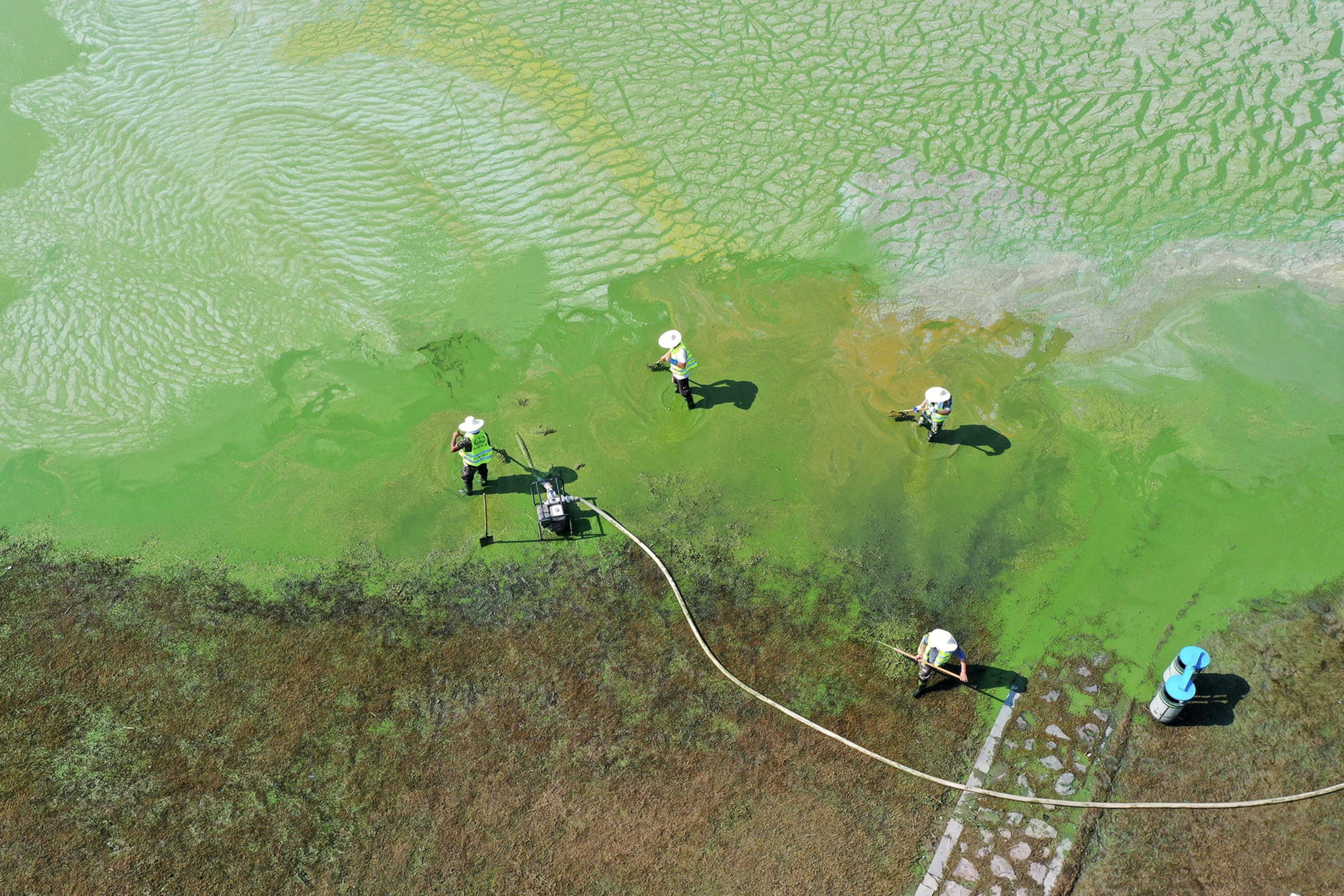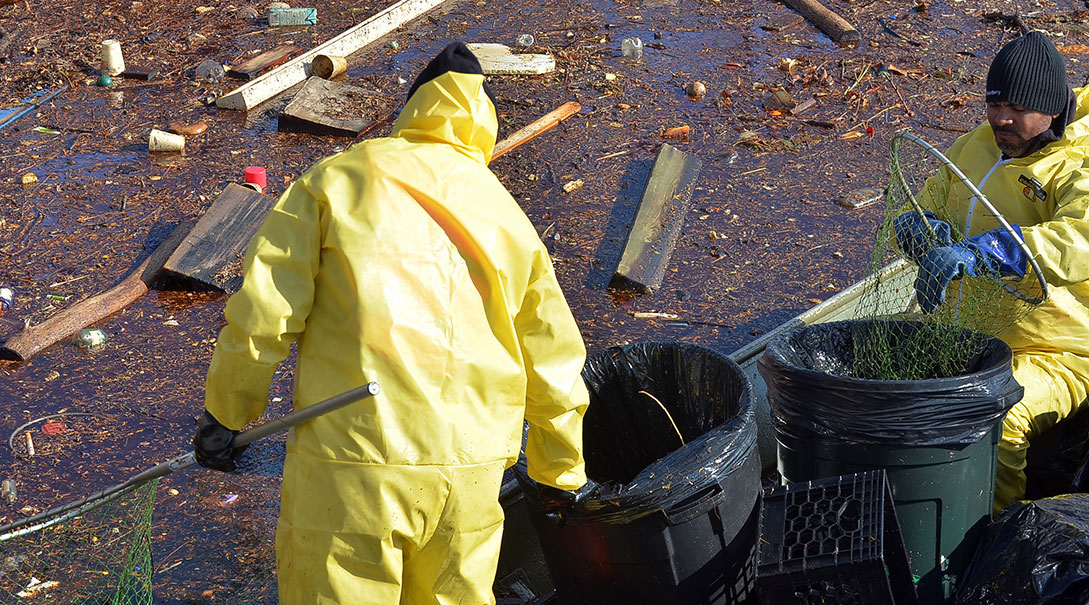
What is Environmental Management System (EMS) auditing?
An Environmental Management System (EMS) audit is the process of assessing an organization’s compliance with ISO 14001:2015, the international standard for environmental management systems.
The audit assesses whether the organization has proper procedures in place to manage its environmental responsibilities, and if any corrective actions need to be taken for non-compliance.
An Environmental Management System audit can be conducted by internal or external auditors who analyze an organization’s operational procedures, documents, records and measurements against ISO 14001:2015 requirements.
The auditor will then report their findings and make recommendations on areas of improvement that need to be addressed. Achieving ISO 14001:2015 certification demonstrates that a company takes environmental responsibility seriously and is committed to reducing their environmental impact.
It also serves as a tool for continual improvement of environmental management system processes. A successful EMS audit is essential for an organization to remain compliant with ISO 14001:2015 standards and maintain their certification status.
Organizations looking to get certified under ISO 14001:2015 need to arrange for an EMS audit, in order to assess their current environmental management system and identify any areas that require attention as well as address significant environmental aspects. The auditor will also provide advice on ways to improve the organization’s EMS and suggest best practices.
A successful audit is essential for obtaining certification and achieving a high level of compliance with ISO 14001:2015 standards. To ensure a smooth audit process, organizations should have all necessary procedures, documents, records and measurements in place prior to the commencement of the audit.
Additionally, they should take the time to train their personnel on environmental policies and requirements so that they can answer any questions from the auditor.

What to expect during ISO 14001 audit?
The key stages of an EMS audit include:
– Preparation – development of the audit plan, followed by the assessment team’s familiarization with the requirements of ISO 14001:2015.
– On-site visits – review and analysis of documents, operating criteria, records and data, as well as interviews with relevant personnel.
– Reporting – summarizing of findings in a non-conformance report that identifies areas for improvement or corrective action.
– Follow up – implementing environmental management systems and the implementation of any identified corrective actions and verification that all issues have been addressed properly.

By completing these steps, organizations can ensure that their EMS meets the requirements of ISO 14001:2015 and is effectively implemented. Additionally, they can identify areas where processes or procedures could be improved to ensure continued compliance with environmental regulations.
Finally, an EMS audit can provide valuable insight into the environmental performance of an organization, helping them make informed decisions about how to reduce their impacts on the environment and save costs in the long term.
The environmental management system requirements are set in place to help each organization established environmental objectives and internal audits to aid in proper business processes incase of an unplanned external audit.
In addition to identifying issues and providing recommendations for improvement, a successful ISO 14001 audit should include education and training for relevant personnel in implementing the necessary corrective actions.
This will help to ensure that any changes or improvements identified as part of the audit process are properly understood and put into practice effectively.
Furthermore, regular audits help to ensure that any non-conformances are addressed in a timely manner and that the organization remains compliant with all applicable regulations. By undergoing periodic EMS audits, organizations can demonstrate their commitment to environmental responsibility and sustainability.

What are the basic requirements of ISO 14001?
-
Scope of the Environmental Management System
The organization’s activities, products and services should be clearly stated in the scope of the EMS.
This should include a description of the organization’s operations, processes, sites, departments, divisions, etc., to identify any associated environmental aspects or any adverse environmental impacts. Any legal or other requirements that must be addressed should also be specified.
-
Environmental Policy
The Environmental Policy outlines the organization’s commitment to protecting and enhancing the environment, as well as meeting all legal requirements.
-
Evaluation of Environmental Risks and Opportunities
Risks and opportunities should be identified, evaluated, monitored and managed in order to minimize the environmental impact of the organization or to identify any significant environmental aspects. This will involve collecting data relating to environmental performance indicators such as air quality, water usage, waste production and energy consumption.
-
Evaluation of Environmental Aspects
Businesses have a responsibility to put in place measures to reduce the environmental impacts of their activities. This involves assessing what impacts are created and putting in place sustainable practices that minimize or eliminate them.
Examples of such practices include reducing energy consumption, waste minimization, reusing materials and resources, and exploring renewable energy sources. Additionally, businesses must stay abreast of environmental regulations and laws, as failure to comply with these can lead to substantial financial penalties.
-
Environmental Objectives and plans for achieving them
The environmental objectives of your organization should be realistic, achievable and measurable. They should also cover both short-term and long-term goals for the business.
To ensure that these objectives are achieved, it is essential to have a structured plan in place with clear steps toward achieving each one as well as keep maintained documented environmental objectives for all relevant interested parties.
-
Operational Control Procedures
Organizations must take responsibility for setting their own operational controls to ensure that they meet the requirements of ISO 14001.
The standard provides guidance on how organizations should go about this, including defining and documenting relevant internal procedures; assessing environmental objectives; conducting risk assessments; and identifying any training needs.
When it comes to implementing these operational controls, organizations need to ensure that they are appropriate for the sector they operate in and take into account any relevant legal or compliance requirements.
Furthermore, organization should review these controls regularly to ensure that they remain effective and address any changes in legislation or industry practices.
-
Procedure for Emergency Preparedness and Response
With an emergency plan, your organization will be able to respond appropriately and effectively in the event of an environmental emergency. A well-developed plan should include clear roles and responsibilities for staff, methods for communicating with stakeholders, and a system for evaluating the effectiveness of response measures.
-
List of Interested Parties, Legal and Other Requirements
In order to ensure a successful management system, it is essential that the needs and expectations of all interested parties are taken into account. Understanding these interests provides an insight into how the organization’s operations can contribute positively to the wider environment.
-
Competence records
Recording the training and competence levels of every member of your organization is an important part of introducing and managing an EMS. A successful EMS requires all staff to have a good understanding of their environmental responsibilities.
-
Evidence of Communication
Internal and External communications are also a key part of your management system. You can use external communications to inform people in the community or industry about your environmental objectives, progress reports on performance metrics, initiatives you have introduced and successes achieved.
This will demonstrate to stakeholders that your organization is committed to environmental improvement and accountable for its actions.
-
Monitoring Performance Information
In order to demonstrate continual improvement, your organization must measure its performance and effectiveness in relation to the objectives of ISO 14001. It is important to have a record of these evaluations so that you can track the progress made toward achieving those objectives.
-
Compliance obligations record
It is essential to stay up-to-date with all legal environmental requirements that your organization is subject to. This can be achieved by carrying out a competent evaluation of applicable laws and regulations and conducting regular reviews to ensure the record is accurate and current. Additionally, it should also be documented any obligations your organization has to other parties.
-
Internal Audit Program and Results
A regular internal audit of your EMS is essential for its ongoing effectiveness and the overall environmental performance of your organisation. An audit can help to identify any issues or opportunities for improvement that have been overlooked, as well as demonstrate compliance with processes set up as part of implementing an EMS.
-
Management Review Results
The results of a management review should be used to identify areas for improvement, as well as any corrective and preventive actions necessary. Furthermore, senior management should also provide feedback on the effectiveness of corrective and preventive action taken in response to the review results.
-
Nonconformities and Corrective Action
It is important that root cause analysis is conducted to identify the source of the nonconformity. This should include a review of any relevant documentation, as well as an examination of processes and/or procedures which may have contributed to the issue. Once a root cause has been identified, corrective action can be taken to prevent recurrence and ensure compliance.
The corrective action should be documented clearly in your records, including the specific steps taken to ensure the environmental management system conforms to the new policy.
This should include details of any training or process modifications that have been implemented, as well as any changes to procedures and/or equipment used. You should also identify the individuals responsible for each stage of the process.

What are the 3 C’s of ISO 14001 EMS auditing?
- Conformance
- Consistency
- Continual Improvement

What are the mandatory records for ISO 14001?
The mandatory records of ISO 14001 include: Records of competence, awareness, and training.
These records are essential to your environmental management system, as they provide evidence that those involved in the system are adequately trained and aware of their responsibilities.
They demonstrate to regulators and other stakeholders that you have taken steps to ensure that everyone is well informed on how to reduce your environmental impact. Records may include details of courses attended, training materials such as manuals or handouts, and any assessments made about an individual’s knowledge or ability.
Additionally, these records should be regularly updated so that you can track changes in personnel and keep up with advances in technology or processes.
By maintaining a clear record of who has been trained, when they were trained, and what specifically was addressed during the training session(s), you will be able to ensure that all parties understand their roles and remain up-to-date on the latest regulations and best practices.
Additionally, these records provide a basis for continuing improvement in your environmental management system by allowing you to identify gaps or areas where more training may be needed.

How do I audit a ISO 14001 checklist?
In order to achieve ISO 14001 certification, organizations must first develop an environmental policy that contains a commitment to continual improvement and compliance with applicable laws.
The organization must also create objectives and targets for their EMS. These should be aimed at reducing the company’s negative impact on the environment and can include such areas as energy efficiency, waste management, water conservation, emissions control, and pollution prevention.
The next step is to assess any existing environmental impacts of the organization’s operations. This assessment should identify risks or opportunities associated with environmental issues in order to develop mitigation strategies or take advantage of potential benefits.
Once these steps are completed, the organization needs to develop procedures related to all aspects of their environmental activities. These procedures ensure that employees are aware of their responsibilities and know how to handle environmental issues. The organization must also put in place a system for monitoring, measuring, and evaluating the performance of its EMS.
Finally, organizations must provide training to employees on the content covered by their environmental policy and procedures. They should also strive to continually improve their EMS by setting new goals or expanding upon existing objectives.
Doing so will help them maintain ISO 14001 certification while also reducing their negative impacts on the environment.
In summary, ISO 14001 provides organizations with an internationally recognized framework for designing, implementing, and improving an effective environmental management system that can be certified for.

Need Help?
iSi’s safety audit team can help you determine where you stand on compliance with OSHA regulations and provide a prioritized list of findings. Contact us today to learn more about our audits!
Need Assistance?
Are you thinking about getting a safety or health audit? Let us help!